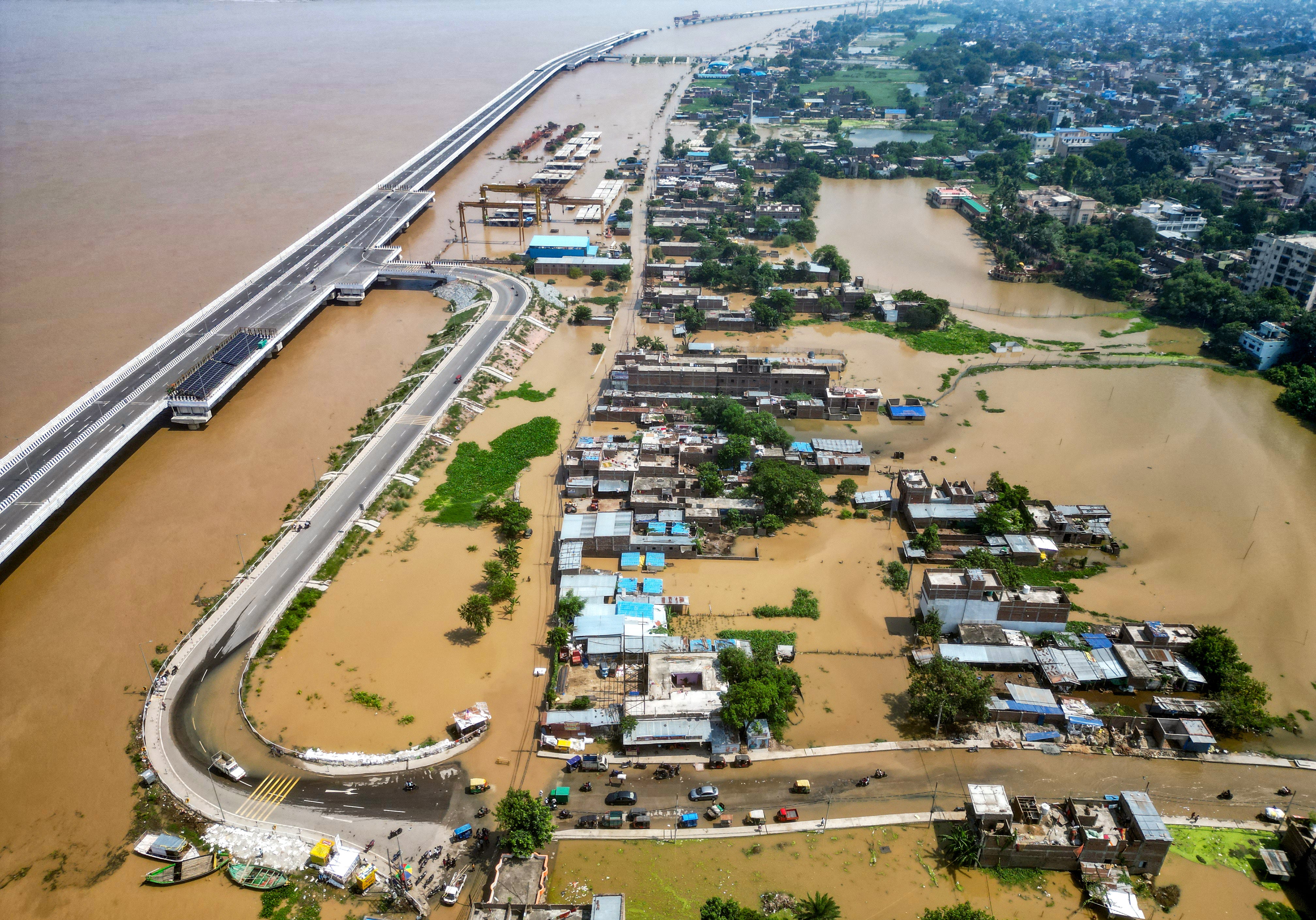At least 46 drown in India as major festival goes ahead despite widespread flooding
Mostly women and children visit rivers, streams and ponds for ritual bathing as part of Jivitputrika Vrat festival in northern Bihar state
At least 46 people, most of them children, have drowned in swollen rivers and ponds in northern India during a Hindu festival amid heavy monsoon rains.
The festival of Jivitputrika Vrat, marked by women fasting and offering prayers for the health and prosperity of their children, sees millions of people visit rivers, ponds and streams for ritual bathing in the northern state of Bihar.
The water bodies have been swollen by heavy monsoon rains this time, leading to scattered incidents of drowning in 15 districts of the state.
The victims include 37 children and seven women. The state has announced ₹400,000 (£3,940) as compensation for the families of each of the victims.

Fatalities during crowded festivities are not uncommon in India. Last year, 22 people drowned during the same festival in Bihar. In July this year, at least 116 people were crushed to death at an overcrowded Hindu religious gathering in the neighbouring state of Uttar Pradesh, the worst such tragedy in more than a decade.
The latest deaths occurred amid heavy rainfall and flooding across India as the monsoon rains continue for longer this year. India usually experiences the monsoon between mid-June to mid-September. This year, though, heavy rains have continued till the end of September, leaving several rivers across the country swollen for longer than usual.
Separate rain-related incidents in Bihar have killed at least 10 people this monsoon season.
In the southern state of Kerala, torrential rains caused a series of landslides that killed at least 200 people and flattened entire villages earlier in the summer.
The monsoon rains also brought the financial capital Mumbai in western India to a standstill this week, killing four people, flooding roads, and leading to cancellation of flights and trains.
This week’s heavy rainfall in the country was caused by excess moisture over the Bay of Bengal in the east and the Arabian Sea in the west, combined with a low-pressure system across the region. More heavy rainfall is forecast in the coming days.
Join our commenting forum
Join thought-provoking conversations, follow other Independent readers and see their replies
Comments